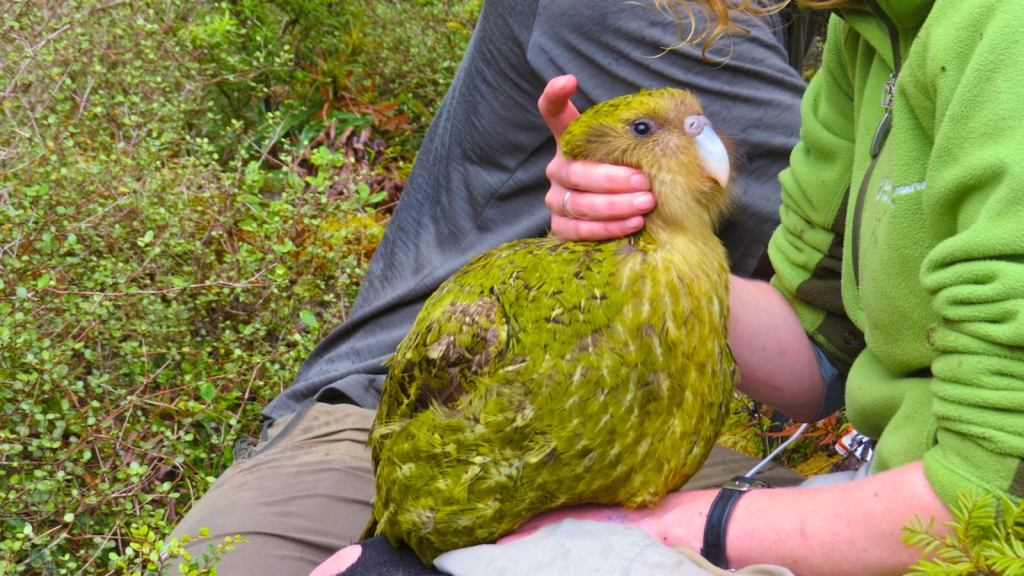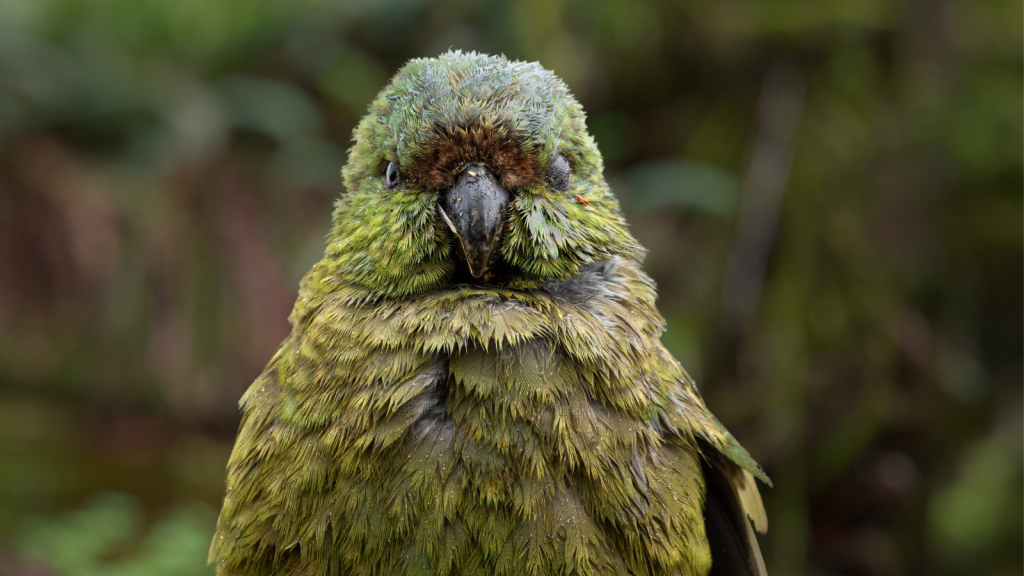The kakapo is a truly remarkable bird, unlike any other on Earth. Native to New Zealand, this chubby, flightless parrot has captured the hearts of nature lovers worldwide. With its owl-like face, moss-green feathers, and endearing personality, the kakapo is a living wonder. Sadly, it’s also one of the world’s rarest birds, with just over 200 individuals left in the wild. Despite its struggles, the kakapo’s story is one of hope, filled with surprising twists and turns. Here are twelve amazing facts about this extraordinary creature that will leave you in awe.
The World’s Heaviest Parrot

Tipping the scales at up to 4 kg, the kakapo holds the title of the world’s heaviest parrot. This chunky bird is about the size of a house cat, making it a true giant among its feathered relatives. Its hefty build is one of the reasons it can’t fly, instead relying on its strong legs to climb and move around. Despite their inability to fly, kakapos are excellent climbers, using their powerful legs and beak to scale tall trees with ease.
A Nighttime Adventurer

Unlike most parrots, kakapos are nocturnal creatures. They come alive after dark, foraging for food and socialising under the cover of night. This unusual habit helps them avoid predators and stay cool in the warm New Zealand climate. Their large eyes are well-adapted for night vision, allowing them to navigate the forest floor and treetops in near-total darkness.
Masters of Camouflage

The kakapo’s feathers are a beautiful mix of moss green, brown, and yellow, creating perfect camouflage in their forest homes. This colouring helps them blend in with the vegetation, making them nearly invisible to potential threats. When danger approaches, they often freeze in place, relying on their camouflage for protection. Their feathers are also unusually soft and fluffy, which helps muffle the sound of their movements as they navigate through the underbrush.
Incredibly Long-Lived Birds

These remarkable parrots can live for an incredibly long time. In the wild, kakapos have been known to reach ages of 60 years or more. Some experts believe they might even live up to 90 years, making them one of the longest-lived bird species on the planet. This longevity is partly due to their slow reproductive rate and the absence of natural predators in their original habitat.
A Unique Breeding System

Kakapos have a fascinating breeding system called ‘lek breeding’. Males gather in a specific area and compete for female attention by making loud booming calls. These booms can be heard up to 5 km away! Females choose their mates based on these calls, making for a truly spectacular breeding season. Interestingly, kakapos only breed every 2-4 years, coinciding with the mass fruiting of certain trees in their habitat.
They Smell Like Flowers

Surprisingly, kakapos have a sweet, musky scent that’s often compared to honey or flowers. This unique smell helps them find each other in the dark and might play a role in their mating rituals. It’s so distinctive that trained dogs can use it to track kakapos in the wild. The scent is produced by an oil gland near the tail, which the birds use to preen their feathers, effectively “perfuming” themselves.
A Diet Fit for a Vegetarian King

Kakapos are strictly vegetarian, munching on a variety of plants, fruits, and seeds. They particularly love the fruit of the rimu tree, which plays a crucial role in their breeding cycle. When rimu fruit is plentiful, kakapos are more likely to breed successfully. Their strong, curved beak is perfectly adapted for grinding tough plant material, and they even have a unique digestive system that allows them to extract maximum nutrition from their plant-based diet.
The ‘Old Night Parrot’

The name ‘kakapo’ comes from the Maori language, where ‘kākā’ means parrot and ‘pō’ means night. So, kakapo literally translates to ‘night parrot’, perfectly describing this nocturnal bird. The Maori people have known and respected these birds for centuries. In Maori folklore, kakapos were often associated with wisdom and were sometimes kept as pets due to their friendly nature.
A Critically Endangered Species

Sadly, kakapos are critically endangered. Their population dropped dramatically after humans arrived in New Zealand, introducing predators like cats and stoats. Today, there are just over 200 kakapos left, each with its own name and carefully monitored by conservationists. The entire population now lives on predator-free islands, where they are protected and studied to ensure their survival.
The Cheekiest Parrot Around

Kakapos are known for their curious and playful nature. They often approach humans without fear, climbing on them and investigating everything with their beaks. This friendly behaviour, while endearing, has unfortunately made them easy targets for predators. Their trusting nature extends to other birds too; kakapos have been observed attempting to mate with researchers’ heads or even inanimate objects, showcasing their endearing but sometimes misplaced affection.
A Unique Defensive Tactic

When threatened, kakapos have an unusual way of defending themselves. Instead of flying away (which they can’t do), they often freeze in place or run away on foot. If cornered, they might try to push away the threat with their feet or beak. This defensive strategy, while not always effective against introduced predators, served them well against their native aerial predators in New Zealand.
Hope for the Future

Despite their critically endangered status, there’s hope for the kakapo. Intensive conservation efforts have seen their numbers slowly increase in recent years. Every new kakapo chick is celebrated as a victory for the species, bringing us one step closer to securing their future in the wild. Advanced breeding techniques, including artificial insemination and egg fostering, are now being used to boost the population and increase genetic diversity among these remarkable birds.
Becky is a fervent wildlife enthusiast and pet care expert with a diploma in canine nutrition. Her love for animals stretches beyond the domestic, embracing the wild tapestry of global fauna. With over a decade of experience in animal welfare, Becky lends her expertise to OutlandishOwl through insightful articles, captivating wildlife information, and invaluable guidance on pet nutrition. Her work embodies a deep commitment to understanding the intricate lives of animals and a passion for educating others on sustaining natural habitats. Becky's hands-on conservation efforts and her knack for translating complex dietary science into practical pet feeding tips make her an indispensable voice for creatures great and small.




